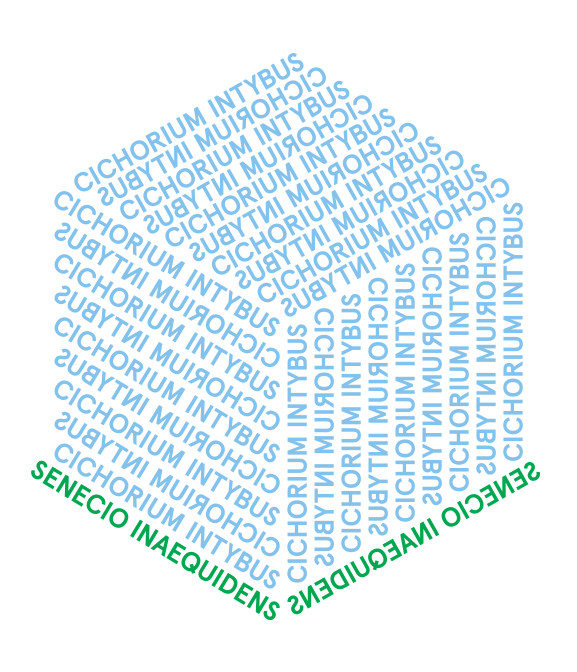Senecio inaequidens (narrow-leaved ragwort)
Asteraceae (sunflower family)
Perennial herbaceous, highly branched plant, 60–100 cm tall, narrow lineal leaves, encompassing half the stem, numerous flower baskets with yellow lingulate florets, flowers until the beginning of December. Fruits with pappus, dispersed mainly by the wind.
Ruderal on fallow land, highly competitive on polluted soils on roads and railway lines (dusts, tire abrasions, road salt, herbicides). Particularly striking in late autumn as a continuous yellow flower band in the median strip of many highways.
Native to South Africa, neophyte in Europe. First observations in Southern Germany in the 1980s. Probably the type of plant that has spread the most here in the last 30 years.
Cichorium intybus (chicory)
Asteraceae (sunflower family)
Perennial herbaceous plant, 30–120 cm tall, with a strong stalk, pinnate leaves and numerous pronounced flower heads with blue ray florets; flowering late between July and October. Dispersal by water, animals and humans.
Grows as a wild plant on pastures and ruderal areas and as robust species preferably on roadsides. A biennial cultivar is cultivated as a root or coffee chicory (roasted root as a coffee substitute) and as leaf chicory for salads (chicory).
In southern Germany archaeophyte, initially introduced as a crop. Today only rarely grown, but widespread as a wild plant. Natural area includes parts of Europe and West Asia. Now occurring globally.
